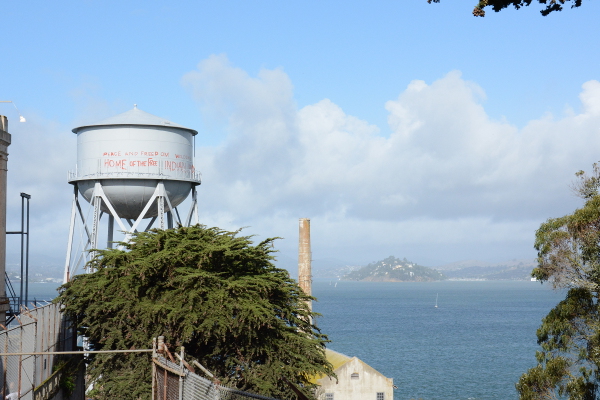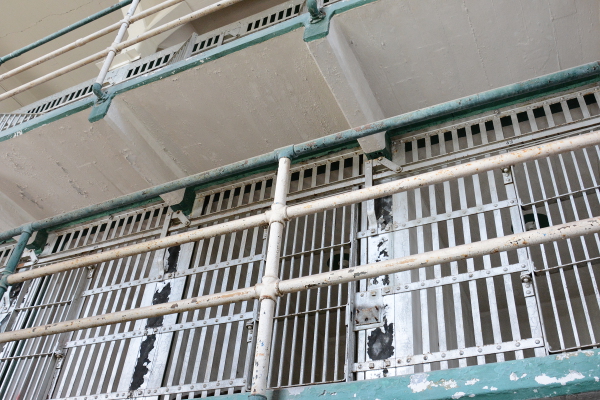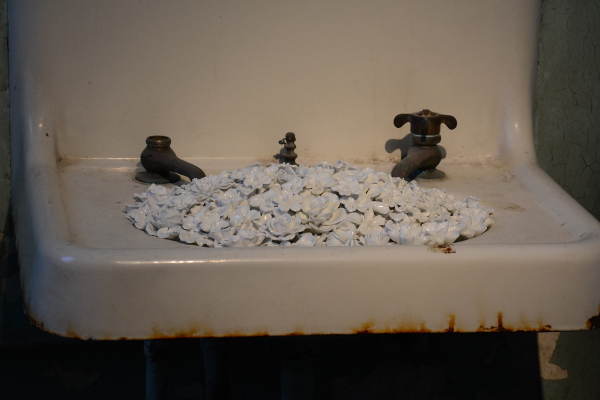It wasn’t that long ago I was wishing I could attend the exhibit by Chinese artist Ai Weiwei in Berlin. Then it was announced that the famed (or infamous) dissident would be showcasing a new collection — @Large: Ai Weiwei on Alcatraz — at the famed (or infamous) Alcatraz Prison. To be honest, I really didn’t have all that much interest in Alcatraz, especially given that we were only in town for 48 hours. But that changed once I found out about the exhibit. And it changed again once I arrived on the island prison known as “The Rock.”
For those unfamiliar, Alcatraz Island is located just off the coast of San Francisco in the aptly named San Francisco Bay. The island has a lighthouse and acted as a military prison in 1868 and a federal prison from 1933 to 1963. During its time as a federal penitentiary, Alcatraz was home to such criminals as Al Capone, George “Machine Gun” Kelly and Robert Franklin Stroud, aka the Birdman of Alcatraz. Starting in the mid-1960s, the island was occupied by a group of Native Americans as part of a protest against United States government’s policies related to Native Americans. Evidence of the occupation can still be seen today, most notably with writing on the buildings.
Alcatraz is an extremely popular tourist stop. The National Park Service recommends you buy tickets at least a week ahead of time because they do sell out. Because visitors take a short ferry ride across the San Francisco Bay from the city to the island, tickets are timed. You arrive on Pier 33 a half-hour or so before your timed ticket, queue up and wait for the ferry. In an odd amusement park-type of action, they take posed photos of you and your party just before getting on the ferry. Then, on return to the dock, they try to sell the photo to you. Nice photo? Sure. But it is a prison.
My greatest hesitation in going to the island was that I read there was a picket line that had to be crossed. Apparently the company running the ferry recently changed and the new company isn’t union whereas the previous was. This information appeared to be out of date, luckily, as we encountered no such thing.
Once you get to the island, if you aren’t taking a tour, you’re free to explore. There’s no clear path to take. Just explore. One of my favorite places was a path down the back of the island and leading up to the large concrete walled-in recreation yard for the prisoners. The path offers access to wonderful native plants as well as a spectacular view of the Golden Gate Bridge. One word of warning: the path is super windy!
The Ai Weiwei exhibit is sort of loosely integrated into the prison. It’s curated extremely well. For most of the pieces on display, you could walk right up to them and, for example, admire the hand-painting and delicate bamboo boning on the dragon kite (“With Wind”) or the individual Lego bricks depicting political prisoners across the world (“Trace”) — the latter of which includes binders on podiums so that you can look up who these people are and read brief biographies. For others, you walk down narrow passageways: the rocky island looming over you on one side, on the other, down below you in a different room you can only see through broken windows, is a metal sculpture (“Refraction”) of solar panels, tea kettles and frying pans. The exhibition by Ai is also notable because some of the art is on display in buildings that are generally not open to the public, such as the cellhouse hospital.
While I arrived at Alcatraz a skeptic, I left a believer. It’s, without a doubt, a must see for anyone visiting San Francisco. If you happen to be in the area and have a chance to visit before April 26, 2015, you have the added bonus of seeing Ai Weiwei’s moving exhibition. I highly recommend both.









Pingback: Must See List: Mont Saint-Michel - Reverberations